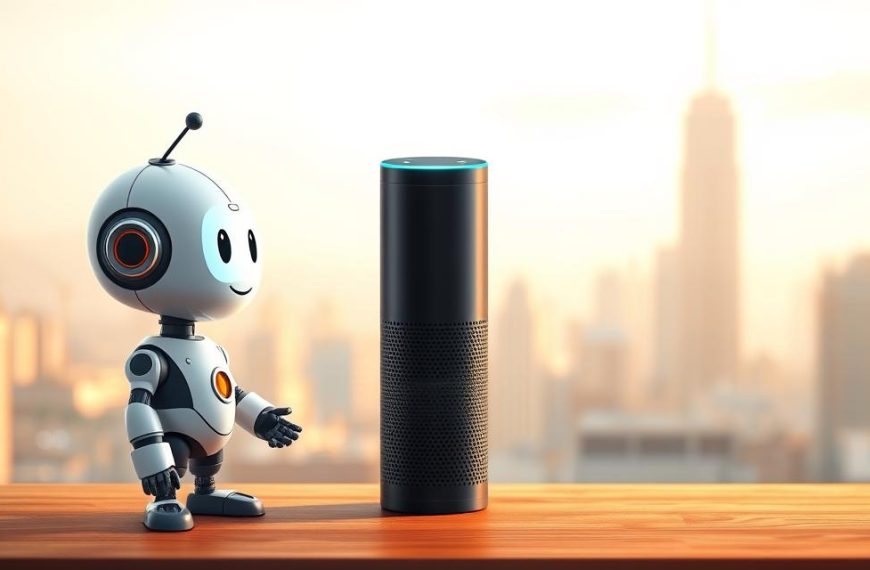The chatbot sector’s rapid expansion underscores its transformative potential. With revenues projected to surge from £103.2 million in 2023 to £341.1 million by 2027, these tools are reshaping how organisations engage with customers. Over a quarter of UK businesses now prioritise chatbots as their main support channel, handling transactions worth £84 billion annually.
Modern solutions have evolved far beyond basic scripted replies. Today’s AI-driven systems personalise interactions, resolve complex queries, and streamline operations across sectors. From retail to healthcare, enterprises leverage this technology to boost efficiency while maintaining human-like responsiveness.
Consider e-commerce platforms using chatbots for tailored product suggestions, or banks automating account updates through secure messaging. Even healthcare providers employ these tools for appointment scheduling and triage support. Such implementations highlight how strategic deployment drives measurable outcomes – reduced wait times, higher satisfaction rates, and scalable service delivery.
This guide analyses industry-specific applications, from telecommunications to education. We’ll explore how aligning chatbot capabilities with operational needs creates competitive advantages. For instance, customer service chatbots can slash response times by 80% when integrated with CRM systems, as demonstrated by leading UK brands.
As adoption accelerates, understanding optimal use cases becomes critical. The following sections detail implementation frameworks, success metrics, and emerging trends shaping conversational AI’s future in British business landscapes.
Chatbot Innovations in E-Commerce and Retail
Advanced conversational tools are transforming online shopping dynamics. Retailers now deploy AI assistants that combine browsing patterns with purchase history to suggest products matching individual tastes. This approach boosts engagement while cutting decision fatigue – H&M’s style advisor chatbot, for instance, reduced returns by 28% through accurate size predictions.
Enhancing Digital Storefront Interactions
Modern systems handle queries about fabric composition, stock availability, or delivery timelines instantly. Starbucks’ ordering assistant demonstrates this efficiency, processing custom drink requests while applying loyalty points automatically. As one retail executive notes:
“These tools don’t just answer questions – they anticipate needs through contextual awareness.”
Intelligent Order Management Systems
Real-time tracking updates via chatbots have become standard. Features include:
- Proactive shipping delay alerts
- Interactive parcel location maps
- Instant return initiation buttons
| Feature | Benefit | Example |
|---|---|---|
| Style Recommendations | 23% higher conversion rates | H&M’s outfit curator |
| Rewards Integration | 18% more repeat purchases | Starbucks’ order bot |
| Visual Search | 34% faster product discovery | ASOS’ image recognition |
Personalisation engines refine suggestions after each interaction, creating tailored journeys that mirror expert in-store assistance. This strategy not only elevates customer experience but drives measurable sales growth through contextual upselling.
Where to use chatbots for Superior Customer Support
Modern enterprises are redefining engagement strategies by implementing AI-driven solutions for frontline assistance. These systems handle 68% of routine enquiries across UK businesses, freeing human teams to tackle nuanced issues. Immediate response capabilities transform service delivery – 83% of consumers prioritise speed over human interaction for simple requests.
Streamlining Common Enquiries
Customer service platforms now resolve basic queries in under 12 seconds through curated knowledge bases. DevRev’s Turing AI exemplifies this approach, analysing past interactions to auto-generate answers for frequently asked questions. One telecom provider reported:
“Our resolution times halved after deploying contextual response systems.”
Unified Communication Frameworks
Seamless integration across channels ensures consistent experiences. Key features include:
- Shared conversation histories between chatbots and agents
- Automatic language preference detection
- Real-time translation for multilingual support
Advanced systems like HSBC’s virtual assistant maintain dialogue continuity whether customers message via WhatsApp or website chat. Sentiment analysis tools escalate tense interactions, while CRM links personalise responses using purchase records. This orchestration reduces repetition – 74% of users avoid restating issues when switching channels.
Chatbots Transforming Healthcare Services
Healthcare providers are leveraging conversational AI to revolutionise patient care delivery. These tools bridge accessibility gaps while maintaining strict data protection standards – crucial in handling sensitive medical information. Over 62% of NHS trusts now employ some form of AI-assisted support, with chatbots managing routine tasks to ease staff workloads.
Improving Patient Interaction and Support
Intelligent systems triage concerns through symptom-checking dialogues. Babylon Health’s chatbot demonstrates this capability, analysing user inputs against medical databases to suggest appropriate actions. One GP practice reported:
“Our service capacity increased by 40% after implementing AI-driven triage.”
Key functionalities include:
- Personalised medication reminders via SMS or app notifications
- Instant answers to common queries about side effects or dosage
- Secure messaging for non-urgent follow-ups
Facilitating Appointment Scheduling and Information Access
Automated booking systems eliminate phone queues by integrating with clinic calendars. Patients can:
- Check available slots across multiple specialities
- Reschedule appointments in three clicks
- Receive automated preparation reminders
Integration with electronic health records ensures chatbots pull relevant medical histories during interactions. This process reduces administrative errors while keeping consultations focused. As waiting lists grow, such efficiencies become vital for maintaining quality customer care in overstretched NHS services.
Revolution in HR and Insurance with Chatbots
Corporate landscapes are undergoing a silent revolution through conversational AI adoption. HR departments and insurance providers now deploy intelligent assistants to streamline operations while maintaining human-centric service. These tools handle everything from employee onboarding to complex claims processing – all while reducing administrative burdens.
Enhancing Employee Engagement and Onboarding
Modern HR platforms transform new hire experiences through guided digital journeys. Chatbots walk recruits through policy sign-offs, benefits enrolment, and training schedules with military precision. As one FTSE 100 HR director observes:
“Our onboarding process now takes three days instead of three weeks – without sacrificing quality.”
Key capabilities include:
- Instant access to handbooks and holiday policies
- Automated payroll queries resolution
- Performance review scheduling via natural conversations
Insurance sectors benefit equally. Policyholders can check coverage details or initiate claims through secure messaging. Aviva’s virtual assistant processes 22% of motor claims without human intervention – slashing processing times from days to hours.
| Function | Business Impact | User Benefit |
|---|---|---|
| Automated Onboarding | 64% faster ramp-up | Clear progression tracking |
| Claims Automation | £1.2M annual savings | 24/7 status updates |
| Benefits Management | 78% query reduction | Instant policy customisation |
These solutions demonstrate how strategic AI implementation elevates both customer experience and operational efficiency. Employees gain self-service tools, while managers reclaim hours previously lost to routine administration.
Empowering Telecoms and Education Through Chatbots
Conversational AI solutions are driving operational transformations across multiple sectors. Within telecoms and education, these tools address critical challenges through intelligent automation and tailored support systems. Providers in both industries now achieve scalability while maintaining quality customer engagements.
Reducing Service Bottlenecks in Telecoms
Telecom operators face constant pressure to resolve customer queries swiftly. AI assistants now handle 65% of routine account management tasks, from bill explanations to service troubleshooting. This automation reduces call centre volumes by up to 40%, as demonstrated by EE’s implementation last year.
Technical support capabilities include:
- Instant network diagnostics via SMS
- Self-service password resets
- Proactive outage notifications
“Our virtual agents resolve three times more data usage enquiries compared to human teams during peak hours.”
Delivering Personalised Learning Experiences
Educational institutions harness chatbot technology to support diverse learning needs. These systems provide instant access to course materials and assignment guidance, functioning as round-the-clock academic assistants. Through adaptive algorithms, they assess individual knowledge gaps and recommend targeted resources.
The University of Manchester’s chatbot initiative reduced administrative queries by 58% while improving student satisfaction scores. Key integrations with virtual learning environments enable:
- Automated deadline reminders
- Personalised revision schedules
- Real-time grade tracking
| Sector | Key Functions | Impact | Example |
|---|---|---|---|
| Telecoms | Billing support, network diagnostics | 32% faster resolution times | EE’s Chatbot System |
| Education | Assignment tracking, resource curation | 41% fewer admin requests | University of Manchester’s Learning Assistant |
These implementations showcase how strategic AI deployment solves industry-specific pain points. Whether streamlining telecom services or enhancing educational user experiences, chatbots prove indispensable in modern operational frameworks.
Chatbots Fueling Marketing and Sales Strategies
Intelligent conversational tools are reshaping revenue generation through precision targeting and adaptive engagement. Over 67% of UK marketers now deploy AI assistants to personalise campaigns while capturing high-quality leads. Forrester research reveals these systems can double conversion rates, with early adopters achieving £3.42 returns for every £1 invested.
Driving Personalised Product Recommendations
Sophisticated algorithms analyse browsing patterns and purchase histories to suggest relevant items. ASOS’s virtual stylist increased basket sizes by 19% through real-time outfit pairings. These systems adapt with each interaction, refining suggestions based on emerging preferences.
Key mechanisms include:
- Behaviour-triggered pop-up offers
- Abandoned cart recovery sequences
- Dynamic pricing alerts for watched items
“Our recommendation engine drives 34% of total revenue through contextual upselling.” – Retail Marketing Director
Boosting Lead Generation and Conversions
Automated qualification processes filter prospects using strategic questioning. Chatbots assess budget, authority, and need before routing sales teams to hot leads. This approach slashes wasted outreach efforts by 62%.
| Tactic | Impact | Example |
|---|---|---|
| Lead Scoring | 47% faster conversions | Aviva’s insurance advisor |
| Campaign Integration | 29% higher click-through | Boots’ holiday promotions |
| CRM Syncing | 83% data accuracy | Salesforce Einstein |
Real-time analytics help refine messaging across channels. Integration with marketing platforms ensures seamless data flow from initial contact to final purchase.
Real-World Success Stories: DevRev, Siri, Alexa and More
Leading brands across industries demonstrate how conversational AI drives tangible results. These solutions combine technical precision with human-centric design, delivering measurable improvements in efficiency and satisfaction. Strategic implementation transforms theoretical potential into operational reality.
Case Study Insights on Effective Interactions
DevRev’s Turing AI redefines customer support through automated ticket analysis. The system identifies patterns across 15,000+ monthly enquiries, generating instant resolutions while flagging recurring product issues. One tech firm reported:
“Response times improved by 73% without compromising solution quality.”
Apple’s Siri showcases voice-activated convenience at scale. The assistant handles 2.5 billion requests monthly, integrating with HomeKit devices and personal calendars. Key achievements include:
- 38% faster smart home configurations
- Personalised reminders based on location data
- Natural language processing in 21 languages
Building Lasting Brand Connections
Domino’s Pizza Bot exemplifies transactional excellence. Customers reorder favourites in three taps, tracking deliveries via interactive maps. The experience boosted repeat orders by 22% through:
- Saved payment preferences
- Custom pizza builders
- Real-time delivery updates
Amazon’s Alexa extends beyond voice commands, creating branded experiences through Skills. Partners like National Rail integrate live departure boards, demonstrating how utility strengthens brand loyalty. Uber’s chat interface similarly reduces booking friction, processing 18% more rides during peak hours.
| Brand | Innovation | Impact |
|---|---|---|
| Facebook Messenger | In-app purchases | 31% conversion lift |
| Aviva | Claims automation | £850K annual savings |
| ASOS | Visual search | 29% basket growth |
Future Trends and Technological Advancements in Chatbot Development
As conversational AI matures, its next evolutionary leap focuses on hyper-personalisation and adaptive interfaces. Industry analysts predict these systems will become primary support channels for 25% of UK businesses by 2027. This shift stems from advancements enabling technology to interpret emotional cues and historical data for context-aware responses.
Intelligent Systems Redefining User Experiences
Breakthroughs in machine learning allow chatbots to analyse behavioural patterns across multiple touchpoints. Natural language processing now deciphers regional dialects and industry jargon with 92% accuracy. Such capabilities empower customer service platforms to deliver tailored solutions rather than scripted replies.
Voice-Driven Interactions Gain Momentum
Multimodal interfaces combining text, speech, and visual elements are reshaping engagement. Over 43% of UK users prefer voice-activated queries for hands-free convenience. Retailers like John Lewis now test systems where shoppers describe desired products, receiving instant visual matches and stock updates.
These innovations signal a broader role for conversational AI in business ecosystems. As systems grow more intuitive, they’ll proactively address needs before issues arise – transforming chatbots from reactive tools into strategic assets across industries.



















